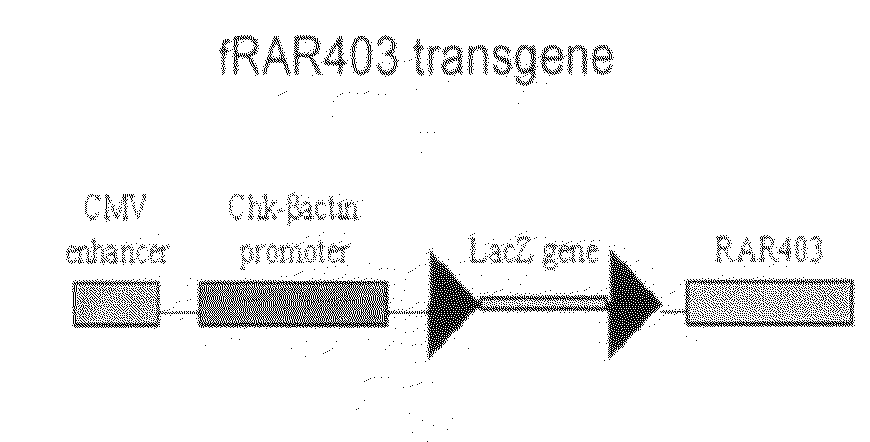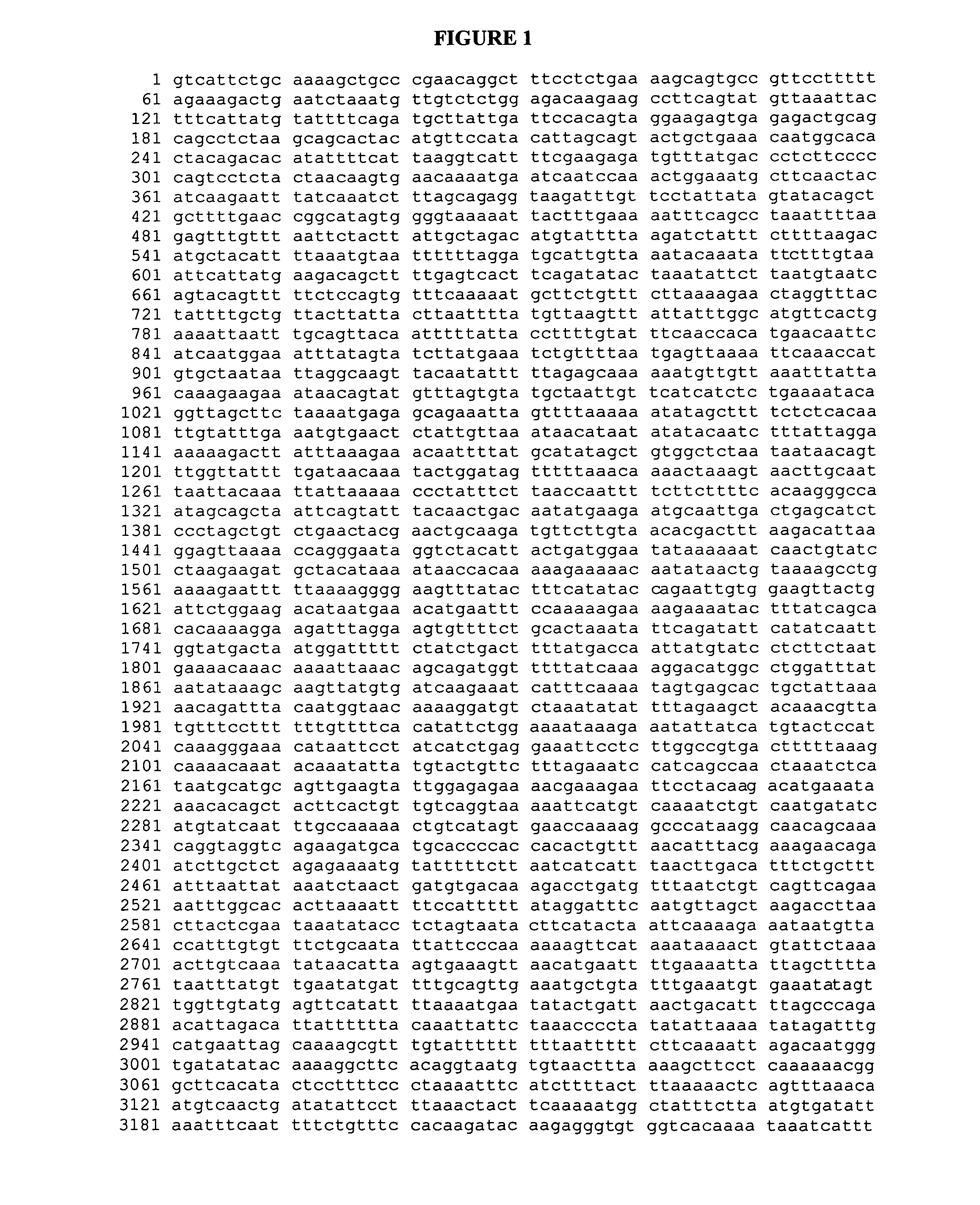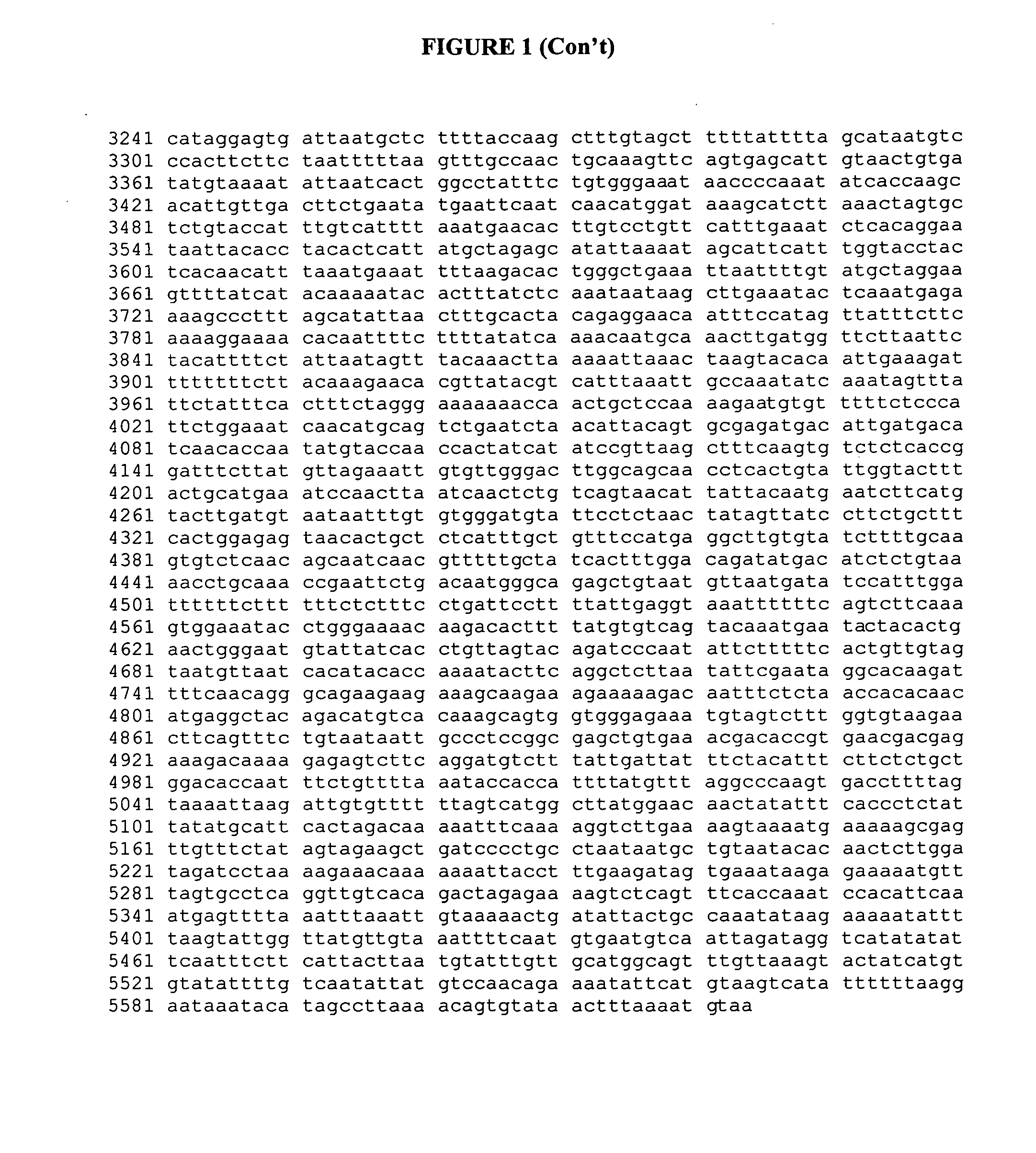Novel GPCR and methods of use of the same
a technology of gpcr and receptor, which is applied in the field of g protein coupled receptor, can solve the problems of not being able to directly activate the survival pathway, inhibit the death of cardiac myocytes, and no drugs currently available in the clinic, so as to improve cardiac morphology and function, and affect patient survival
- Summary
- Abstract
- Description
- Claims
- Application Information
AI Technical Summary
Benefits of technology
Problems solved by technology
Method used
Image
Examples
example 1
Ablation of Retinoid Signaling in the Myocardium
[0415]Heart failure upon retinoid signaling ablation. Vitamin A serves a crucial role during development and in homeostasis. Nutritional deficiency or excess retinoic acid both lead to embryonic malformations depending on the time of exposure and dose (Dickman et al., Development 124:3111-3121, 1997). Retinoids exert their functions by binding to nuclear receptors, RAR and RXR, both of which are members of the super-family of ligand-inducible transcriptional regulators (Evans, Science 240:889-895, 1988; Green and Chambon, Trends Genet. 4:309-314, 1988). The ligand-activated receptors differentially regulate gene expression through specific hormone-responsive DNA elements, where the receptors can bind as heterodimers or homodimers (Umesono et al., Cell 65:1255-1266, 1991).
[0416]Several lines of evidence suggest a role for retinoid signaling in adult myocytes. Over-expression of a truncated RXRα in transgenic mice resulted in low penetra...
example 2
Novel GPCR Expressed in the Heart
[0424]GPR22 (20RH) is an orphan type-I GPCR that, at least in adult tissues, is exclusively expressed in the brain and heart, suggesting the 20RH could play a role in cardiac function.
[0425]To address its physiological role, we generated conditional mutagenesis of 20RH by means of the generation of a 20RH floxed allele in which exon 2 is flanked by LoxP sites located upstream of a selectable neo FRT. Embryonic stem cell clones positive for homologous recombination were selected by Southern blot and injected in mouse blastocytes to generate mice carrying a floxed allele of 20RH (20RHf / +). Homozygous 20RH floxed mice (20RHf / f) were generated through backcross with parental strain.
[0426]In order to establish the physiological role of 20RH, systemic and conditional mutation of 20RH were carried out by means of interbreeding of 20RHf / + with either mice expressing Cre in germ line, protamine Cre (systemic mutant), or expressing Cre in the ventricular myocy...
PUM
| Property | Measurement | Unit |
|---|---|---|
| pH | aaaaa | aaaaa |
| pH | aaaaa | aaaaa |
| pH | aaaaa | aaaaa |
Abstract
Description
Claims
Application Information
 Login to View More
Login to View More - R&D
- Intellectual Property
- Life Sciences
- Materials
- Tech Scout
- Unparalleled Data Quality
- Higher Quality Content
- 60% Fewer Hallucinations
Browse by: Latest US Patents, China's latest patents, Technical Efficacy Thesaurus, Application Domain, Technology Topic, Popular Technical Reports.
© 2025 PatSnap. All rights reserved.Legal|Privacy policy|Modern Slavery Act Transparency Statement|Sitemap|About US| Contact US: help@patsnap.com



